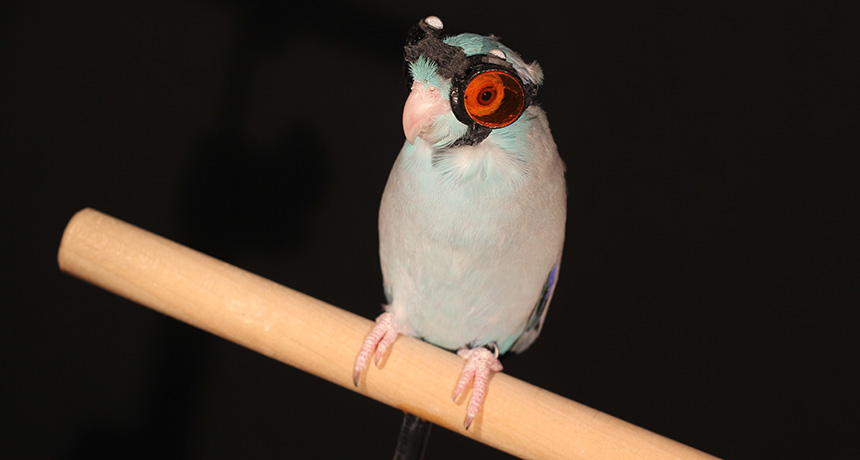Bird plus goggles equals new insight into flight physics
Unexpected vortices form in parrotlet’s wing wake

SAFETY FIRST To study the air flow produced when birds fly, scientists trained a Pacific parrotlet named Obi (above) to fly through laser light. To protect the bird’s eyes, custom-made laser goggles were a necessary precaution.
E. Gutierrez/Lentink Lab/Stanford Univ.






